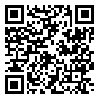Volume 9, Issue 1 (2021)
CLRJ 2021, 9(1): 105-132 |
Back to browse issues page
1- PhD student, Department of Persian Language and Literature, Gachsaran Branch, Islamic Azad University, Gachsaran, Iran
2- Assistant Professor, Department of Persian Language and Literature, Farhangian University, Iran , na.farhadi@cfu.ac.ir
3- Assistant Professor, Department of Persian Language and Literature, Gachsaran Branch, Islamic Azad University, Gachsaran, Iran
2- Assistant Professor, Department of Persian Language and Literature, Farhangian University, Iran , na.farhadi@cfu.ac.ir
3- Assistant Professor, Department of Persian Language and Literature, Gachsaran Branch, Islamic Azad University, Gachsaran, Iran
Abstract: (1824 Views)
In all types of literature, dreams and related phenomena are among the most important foundations of poets and writers, which have been viewed from different angles. In most cases, Rumi does not express his message naturally and is based on a structure based on linguistic habits and the Sufi system of thought. The dream is also intertwined in Rumichr's mind with a multifaceted attitude and finds a different manifestation every moment. In this research, with a descriptive-analytical method and a library method, by examining Rumichr's lyric poems and Levinaschr's book "From Existence to Existence", the concept of a night owl and sleep aversion from the perspective of Rumi and Emmanuel Levinas from the perspective of the American school has been studied. The results of the study suggest that both thinkers believe that drowsiness is one of the first features in the course and behavior and the basis of movement. The invitation of Rumi and Levinas is an invitation to go beyond the situation of a captive human being in the world and to abandon theoretical customs and to engage in true conduct with the help of true awakening and to address the "other". Levinas substitutes another God for an infinite position, and in the opinion of another Rumi, the same is the beloved, and Shams in the position of the beloved is for Rumi a mixture of earthly and heavenly attributes and is similar to what Levinas says about another
Keywords: Comparative Literature, Dream Phobia, Another, Maulana Jalaluddin, Emmanuel Levinas, Ghazals of Shams.
Article Type: Original Research |
Subject:
Comparative research
Received: 2020/12/29 | Accepted: 2021/04/10 | Published: 2021/05/24
Received: 2020/12/29 | Accepted: 2021/04/10 | Published: 2021/05/24
| Rights and permissions | |
 |
This work is licensed under a Creative Commons Attribution-NonCommercial 4.0 International License. |



